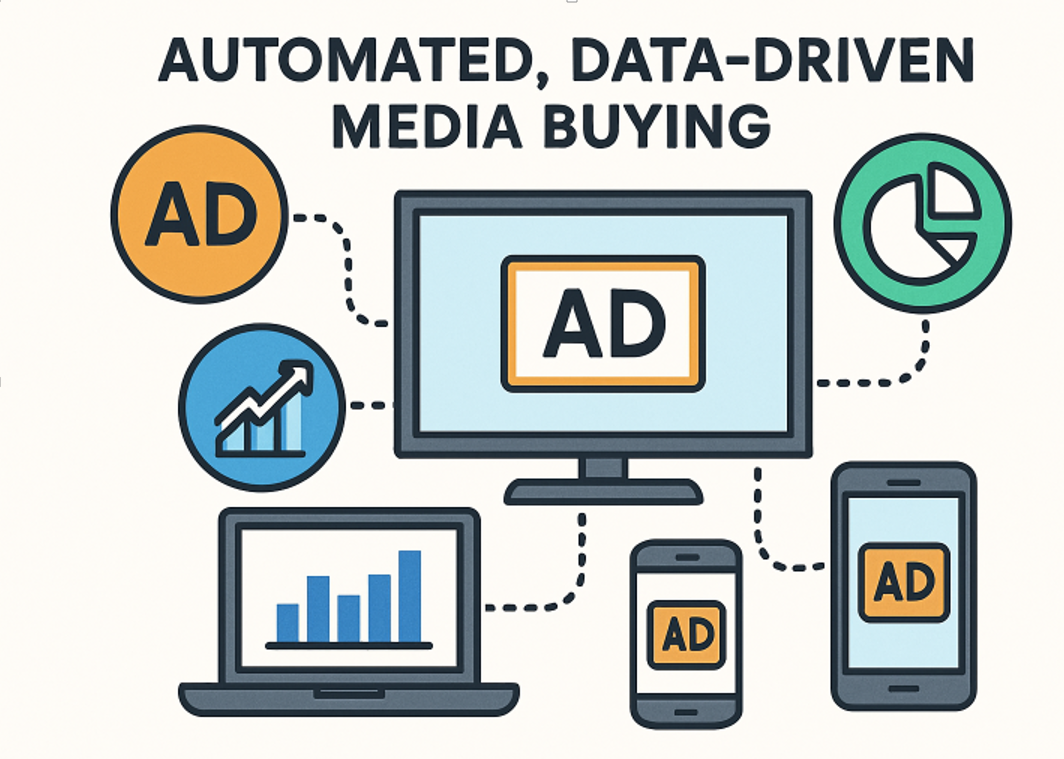Media Buying Reinvented: Smarter Tools for Measurable Success
Modern advertising demands adaptability, precision, and, more than ever, genuine creativity to succeed in an increasingly crowded and competitive landscape. As digital ecosystems and consumer behaviors continuously evolve, brands that leverage innovative media buying strategies position themselves to make every advertising dollar deliver more value. The growth of sophisticated platforms, the rise of new data privacy standards, and changing buyer journeys all mean that staying ahead requires more than just spending more—it requires spending smarter. By weaving advanced media buying technology with the insights drawn from first-party data, marketers can drive campaigns that not only reach large audiences but also yield exceptionally high returns on investment. As competition intensifies, being able to demonstrate measurable success is crucial. This makes it essential to adopt proven, smarter media buying strategies that deliver evaluation, optimization, and growth at every step. For a comprehensive view of these solutions, businesses should refer to dedicated industry authorities at https://mediamaxnetwork.com/media-buying/, which highlights strategies that focus on measurable results and continuous performance enhancement.
For businesses determined to thrive in today’s rapid-paced market, success hinges on embracing data-driven decision-making and cultivating a robust omni-channel presence. Gone are the days when single-channel or intuition-driven planning sufficed. Leading brands are investing in up-to-date media buying guides and best practices to ensure their teams are equipped with the latest tools, insights, and strategic frameworks. By following thoughtful, research-backed approaches, marketers not only maximize campaign impact and efficiency but also future-proof their efforts against shifting industry trends and unpredictable consumer preferences.
Programmatic Advertising: Automating Success
The emergence of programmatic advertising has vastly transformed how brands approach media buying in the digital age. No longer dependent on labor-intensive manual negotiations for ad space, marketers now leverage real-time bidding and algorithmic technology to identify and purchase the most valuable ad inventory. Programmatic advertising allows brands to tap into massive pools of user data—analyzing everything from location and interests to device types and browsing habits—to display highly relevant ads at optimal moments within a user’s digital journey. This sophisticated automation not only expedites the buying process but also empowers continuous campaign optimization, with algorithms capable of adjusting bids, creatives, or placements on the fly in response to real-time data.
The impact of programmatic solutions is multifaceted. Automating traditionally manual processes shrinks campaign launch timelines, while allowing brands to target their audiences with exceptional accuracy. Moreover, programmatic platforms are highly scalable, enabling businesses to extend campaigns across millions of websites, apps, and networks within seconds. Whether reaching niche interest groups or broad consumer segments, brands that prioritize programmatic purchasing enjoy more cost-effective campaigns and measurable lifts in engagement, conversions, and brand awareness.
Benefits of Programmatic Advertising
- Efficiency: Automated buying slashes manual labor, speeds up campaigns, and allows real-time responsiveness to changing market conditions.
- Enhanced Targeting: Sophisticated algorithms surface ads to users most likely to engage, based on intent, demographics, behaviors, and more.
- Scalability: Access to vast digital inventory means brands can effortlessly extend reach and tailor campaigns across multiple channels.
When implemented strategically, programmatic media buying becomes a cornerstone for boosting campaign efficiency and maximizing return on ad spend, leaving traditional methods far behind.
Harnessing First-Party Data for Precision Targeting
As global privacy changes and the gradual elimination of third-party cookies disrupt the digital marketing ecosystem, first-party data has risen to become a highly valuable and essential resource. First-party data—collected directly from the audience’s interactions with your company’s websites, mobile apps, emails, and loyalty programs—reflects real, verifiable customer behaviors and preferences. This unique data allows marketers to build a more intimate, accurate, and actionable understanding of their target audiences, empowering tailored messaging and more effective retargeting strategies.
For instance, a retailer could segment consumers who repeatedly show interest in specific product lines and personalize offers just for them, or an educational institution could highlight relevant programs to prospective students based on browsing activity. Additionally, because first-party data is obtained transparently and consensually, it ensures brands stay compliant with privacy laws—fostering trust by giving consumers control over their own information. Brands that successfully build and deploy a robust first-party data strategy can expect higher conversion rates, increased customer lifetime value, and a substantial competitive advantage as access to third-party data continues to wane.
Tips for Building a Robust First-Party Data Strategy
- Invest in modern, secure data collection tools that prioritize transparency and user consent.
- Encourage interactions—such as registrations, newsletter signups, exclusive content access, and surveys—to regularly feed your data pipeline.
- Integrate learnings across marketing automation, CRM platforms, and campaign analytics to create a true 360-degree customer view.
To further refine your data-driven approach, consider consulting Mailchimp’s guide on first-party vs. third-party data, which provides actionable insights into the advantages and practicalities of modern targeting strategies.
See also: How Blockchain Technology Is Transforming Supply Chain Management
Omnichannel Marketing: A Unified Approach
Consumers today expect consistent, meaningful experiences throughout their entire relationship with a brand—whether shopping online, scrolling social feeds, reading emails, or visiting in-store. Omnichannel marketing provides this unified experience, integrating campaigns and messaging across every touchpoint and every stage of the customer journey. When executed effectively, omnichannel strategies dissolve organizational silos, ensuring the customer receives a coherent and personalized narrative regardless of channel, device, or time.
To unlock the potential of an omnichannel approach, marketers must foster active collaboration between creative, data, and media buying teams, so campaign insights and user feedback seamlessly inform messaging across all platforms. Automation tools play a crucial role as well: real-time analytics and workflow management tools enable marketers to swiftly adapt campaigns in response to evolving customer needs or market dynamics. By creating a feedback loop between channels, marketers can personalize both their outreach and follow-up, drastically increasing customer satisfaction and long-term loyalty.
Key Steps to Effective Omnichannel Marketing
- Systematically map out the customer journey to ensure all messages are aligned, cohesive, and timed for maximum relevance.
- Leverage cross-channel analytics and advanced marketing automation to coordinate efforts, track touchpoints, and iterate on strategies.
- Continuously adjust creative and targeting based on real-time behavioral cues and customer feedback from each unique channel.
Brands that lead with omnichannel thinking routinely achieve profound loyalty, sharply higher engagement, and robust conversion rates, proving the unified approach is greater than the sum of its parts.
The Rise of Video and Connected TV Advertising
As consumer behaviors shift away from traditional broadcast TV and toward streaming and on-demand content, the opportunity for brands to engage viewers through video and Connected TV (CTV) advertising has exploded. Channels such as YouTube, Hulu, Roku, and ad-supported streaming networks now provide vast, highly engaged audiences, many of whom are more difficult to reach through legacy advertising models. Video advertising, especially in interactive formats, offers brands a compelling blend of storytelling, visual branding, and direct engagement—all within a format that is proven to capture attention and drive action.
CTV platforms enable deep targeting, allowing marketers to reach viewers based on detailed interests, specific locations, past viewing habits, and even household-level data. With more consumers “cutting the cord,” combining CTV with other digital video advertising delivers unparalleled reach and relevance. Short, high-impact videos that communicate brand value within the first few seconds can spark lasting impressions and prompt direct interaction, especially if coupled with interactive or clickable elements. For brands willing to experiment and iterate, video and CTV advertising are driving engagement rates and ROI far beyond what previous channel strategies could muster.
Best Practices for Video & CTV Success
- Create visually compelling, succinct video creative that conveys the brand’s story and value proposition in under 15 seconds.
- Take full advantage of interactive ad formats, such as overlays and end screens, to generate clicks and subsequent actions where platforms allow.
- Continuously review completion rates, viewability statistics, and user feedback to refine creative and maximize the impact for each advertising platform.
When supported by robust targeting and regular performance optimization, video and CTV campaigns routinely outperform static digital ads in driving awareness, consideration, and purchase intent.
Performance-Based Media Buying: Paying for Results
Increasingly, marketers are prioritizing accountability by shifting toward performance-based media buying, where ad spend is linked directly to measurable business goals. Rather than paying only for impressions, today’s advertisers are demanding transparent, outcome-oriented models—whether cost-per-click (CPC), cost-per-acquisition (CPA), cost-per-lead (CPL), or pay-per-sale approaches. This shift enables brands to continually track the impact of their spend, hone targeting, and optimize campaigns based on what works, not assumptions or gut feelings.
To get the most from performance-based media buying, companies must clearly define their objectives upfront and adopt reliable tracking and analytics infrastructure, so that every click, signup, or purchase can be attributed correctly to its source. Budgets can then be allocated dynamically to the highest-performing channels and creatives, ensuring marketing dollars go further by focusing only on what delivers results. Performance-based models also foster an agile mindset, prompting marketers to experiment, analyze, and iterate quickly to unlock maximum ROI and zero in on the strategies that genuinely drive business growth.
Implementing Performance-Based Buying
- Set explicit, measurable business goals and key performance indicators (KPIs) before launching a campaign, so that success is clearly defined.
- Adopt robust tracking solutions and attribution modeling to gain clarity into what actions are being driven and where improvements can be made.
- Commit to ongoing optimization by testing new creative approaches, refining audience targeting, and adjusting bids and budgets in real time according to data.
Performance-based buying grants brands the control and insight needed to minimize waste, prove campaign value, and accelerate progress toward their most critical business objectives.
In summary, adopting creative media buying strategies that embrace automation, data integrity, integrated outreach, interactive content, and performance measurement is the proven way forward for today’s marketers. By staying adaptable, informed, and proactive in their approach, advertisers ensure not only efficient campaign delivery but lasting competitive advantage in a digital-first advertising world.






